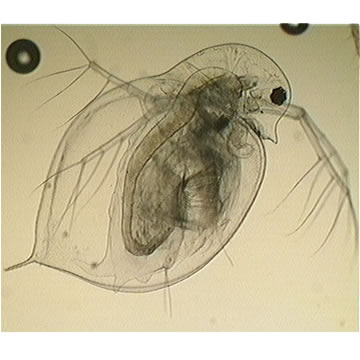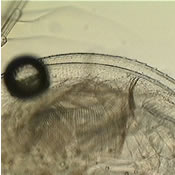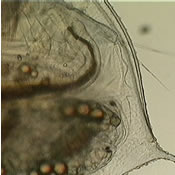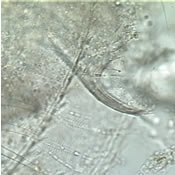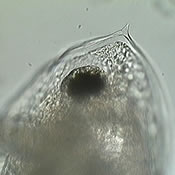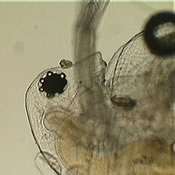(1) CHANG, K. H. and T. HANAZATO.
(2003) Vulnerability of cladoceran species to predation by the copepod
Mesocyclops leuckarti: laboratory observations on the behavioural
interactions between predator and prey. Freshwater
Biology. 48: 476-484.
(2) HEBERT, P.D. and P.M. GREWE. (1985). Chaoborus-induced
shifts in the morphology of Daphnia ambigua. Limnology
and Oceanography.
30: 1291–1297.
(3) HANAZATO, T. (1990) Induction of helmet development by a Chaoborus
factor in Daphnia ambigua during juvenile stages. Journal of Plankton
Research. 12:1287-1294.
(5) HANAZATO, T. (1991) Influence of food density
on the effects of a Chaoborus -released chemical on Daphnia ambigua. Freshwater
Biology. 25: 477-483.
(4) LYNCH, M. (1992) The Life History Consequences
of Resource Depression in Ceriodaphnia Quadrangula and Daphnia
ambigua. Ecology.
73:1620-1629.
(6) MALLIN, M.A. and W.E. PARTIN, WE (1989) Thermal
Tolerances of Common Cladocera. Journal of Freshwater Ecology. 5:
45-50.
(7) RAMOS-JILIBERTO, R. and L. R. ZÚÑIGA.
(2001) Depth-selection patterns and diel vertical migration of Daphnia
ambigua (Crustacea:
Cladocera) in lake El Plateado. Revista Chilena de Historia
Natural. 74:573-585.
(8) MACISAAC, H.J., and J.J. GILBERT. (1991) Competition between
Keratella cochlearis and Daphnia ambigua : effects of temporal pattern
of food supply. Freshwater biology. 25: 189-198.
(9) HEBERT, P.D., J.D. WITT, and S.J. ADAMOWICZ. (2003) Phylogeographical
patterning in Daphnia ambigua: Regional divergence and intercontinental
cohesion. Limnology and Oceanography. 48: 261-268.
(11) WICKHAM, S.A., and J.J. GILBERT. (1993) The comparative importance of
competition and predation by Daphnia on ciliated protists. Archiv
fur Hydrobiologie.
126: 289-313.
(12) ALLAN, JD. (1977) An Analysis of Seasonal Dynamics of a Mixed
Population of Daphnia, and the Associated Cladoceran Community.
Freshwater Biology. 7: 505-512.
